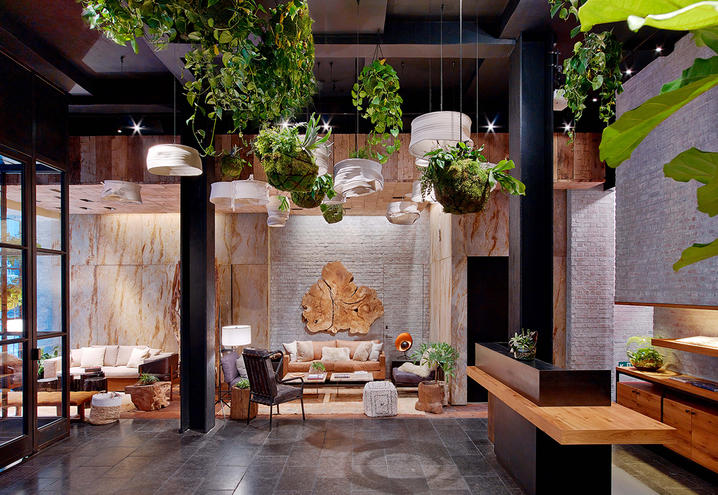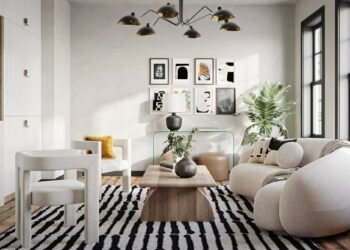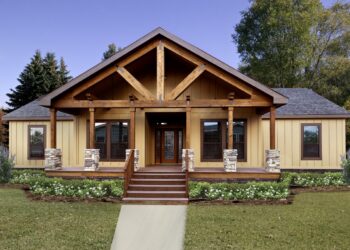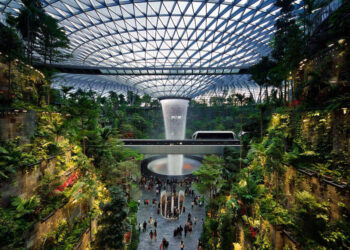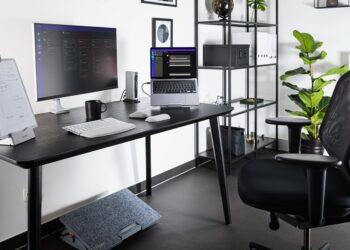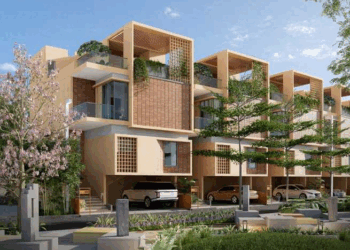Why Design Focuses on Health
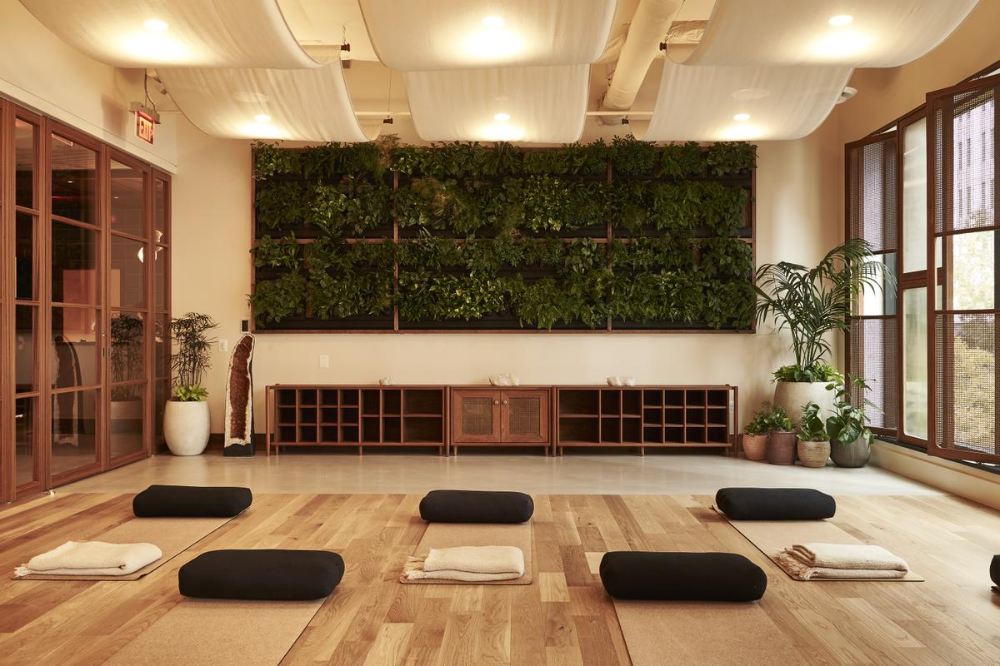
The surging demand for wellness-centric interiors is not a fleeting trend but a fundamental response to modern lifestyles and a growing scientific understanding of how our environments impact our health.
A. Modern Lifestyle Stressors:
A. Digital Overload: Constant connectivity, endless notifications, and prolonged screen time contribute to mental fatigue, eye strain, and a sense of being “always on,” making respite crucial.
B. High-Paced Living: Urbanization, demanding work schedules, and complex personal lives often lead to chronic stress, anxiety, and sleep deprivation, all of which are exacerbated by suboptimal living environments.
C. Sedentary Habits: Increased reliance on technology often means more time spent sitting, both at home and in the office, leading to various physical ailments and reduced overall activity.
B. Growing Health Awareness and Research:
A. Holistic Well-being: There’s a heightened public awareness of holistic health, recognizing that physical, mental, and emotional well-being are interconnected. People are seeking environments that support this interconnectedness.
B. Environmental Psychology: Research in this field consistently demonstrates the profound impact of physical surroundings on mood, cognitive performance, and stress levels. Studies show that elements like natural light, fresh air, and access to nature can significantly improve well-being.
C. Biophilia: The innate human tendency to connect with nature is increasingly understood as a fundamental biological need. Deprivation of this connection (“nature deficit disorder”) leads to negative health outcomes.
D. Indoor Air Quality Concerns: Growing awareness of indoor air pollutants (VOCs from building materials, dust, allergens) and their link to respiratory issues, allergies, and “sick building syndrome” drives demand for healthier material choices and ventilation.
C. Economic and Business Imperatives:
A. Increased Productivity and Engagement: Healthier, happier employees are more productive, creative, and engaged. Investing in wellness-centric office interiors translates directly to better performance and reduced absenteeism.
B. Talent Attraction and Retention: For businesses, offering a wellness-focused workplace is a powerful differentiator in a competitive talent market, attracting and retaining top-tier employees who prioritize their health.
C. Property Value Enhancement: Homes and commercial properties designed with wellness principles are highly desirable, commanding higher market value and faster sales/leases.
D. Reduced Healthcare Costs: By creating environments that promote health, companies can potentially reduce employee healthcare costs and insurance claims.
Core Pillars for Human Flourishing
Wellness-centric interior design is a holistic discipline built upon several interconnected pillars that address various aspects of human health and comfort.
A. Air Quality and Ventilation
Ensuring the air we breathe indoors is clean, fresh, and free from pollutants.
A. Source Control: Selecting building materials, furnishings, paints, and cleaning products that are low in VOCs (Volatile Organic Compounds), formaldehyde, and other harmful toxins. Prioritizing natural, non-toxic alternatives.
B. Robust Ventilation Systems:
A. Fresh Air Exchange: Designing HVAC (Heating, Ventilation, and Air Conditioning) systems that bring in ample amounts of fresh outdoor air and efficiently exhaust stale indoor air.
B. Energy Recovery Ventilators (ERVs) / Heat Recovery Ventilators (HRVs): These systems exchange indoor and outdoor air while recovering heat or coolness, improving air quality without significant energy loss.
C. Targeted Ventilation: Using localized exhaust fans in kitchens and bathrooms to remove moisture and pollutants at the source.
C. Advanced Filtration: Implementing high-efficiency particulate air (HEPA) filters in HVAC systems and using standalone air purifiers to remove dust, allergens, pollen, and airborne particles.
D. Air Quality Monitoring: Integrating smart sensors that continuously monitor levels of CO2, VOCs, particulate matter, and humidity, providing real-time data and triggering ventilation or purification systems as needed.
E. Indoor Plants: Incorporating a variety of indoor plants (e.g., Peace Lilies, Snake Plants, Spider Plants) that naturally filter toxins from the air and increase oxygen levels.
B. Natural Light and Illumination
Harnessing the power of light to regulate circadian rhythms, boost mood, and reduce eye strain.
A. Daylight Maximization: Prioritizing large windows, skylights, light shelves, and open floor plans to allow abundant natural light to penetrate deep into the interior, reducing reliance on artificial lighting during the day.
B. Circadian Lighting Systems: Implementing smart lighting that automatically adjusts its color temperature and intensity throughout the day to mimic natural sunlight patterns. Warmer, dimmer light in the mornings and evenings supports melatonin production for better sleep, while brighter, cooler light in the daytime boosts alertness.
C. Glare Control: Using intelligent blinds, shades, or electrochromic glass to manage harsh glare and direct sunlight while still allowing for natural illumination and views.
D. Layered Artificial Lighting: Combining ambient, task, and accent lighting with dimming capabilities to create flexible illumination that caters to various activities and moods, avoiding harsh overhead lighting.
E. View to Nature: Designing layouts that provide occupants with direct, unobstructed views of natural elements (trees, sky, water, green spaces), which is highly restorative and reduces mental fatigue.
C. Biophilic Design and Connection to Nature
Integrating elements of the natural world to satisfy our innate human need for nature.
A. Abundant Greenery: Incorporating a variety of indoor plants, living walls (vertical gardens), and interior garden spaces. This enhances aesthetics, purifies air, reduces stress, and fosters a direct connection to living systems.
B. Natural Materials and Textures: Using authentic, sustainably sourced materials like wood, stone, cork, linen, cotton, and wool. Their inherent textures, colors, and imperfections add warmth, authenticity, and sensory richness, evoking the natural world.
C. Organic Forms and Patterns: Designing with curvilinear lines, biomorphic shapes, and patterns found in nature (e.g., fractals, leaf veins, water ripples) in furniture, architecture, and decor, which are psychologically calming.
D. Water Features: Integrating small, soothing indoor water features (fountains, aquariums) for their calming visual and auditory effects, helping to mask unwanted noise and create a tranquil ambiance.
E. Natural Scents: Using essential oil diffusers with natural, calming scents (e.g., lavender, citrus, cedarwood) derived from plants.
D. Acoustic Comfort
Managing sound to create environments conducive to focus, relaxation, and clear communication.
A. Soundproofing: Investing in high-quality windows (double/triple glazing), well-insulated walls, and solid-core doors to block external noise from traffic, neighbors, or busy office areas.
B. Acoustic Absorption: Incorporating soft furnishings (thick rugs, heavy curtains, upholstered furniture), acoustic panels (often disguised as art), and textured wall coverings to absorb internal echoes and reduce reverberation, creating a quieter, more comfortable soundscape.
C. White Noise/Sound Masking: Utilizing subtle background sound (white noise or natural ambient sounds) to mask distracting noises and enhance speech privacy in open-plan offices or shared living spaces.
D. Strategic Zoning: Creating dedicated quiet zones, focus pods, or meditation rooms within larger environments to provide respite from auditory stimulation.
E. Physical Comfort and Ergonomics
Designing spaces and furnishings that support healthy posture, movement, and overall physical well-being.
A. Ergonomic Furniture: Providing adjustable chairs, sit-stand desks, and monitor arms in offices to support neutral posture, reduce musculoskeletal strain, and encourage movement throughout the day. In homes, selecting comfortable, supportive seating.
B. Movement Encouragement: Designing layouts that encourage regular movement, such as prominent staircases, walking paths, and varied work zones that require shifting positions.
C. Thermal Comfort: Designing for stable and comfortable indoor temperatures and humidity levels, with personalized controls where possible. Avoiding drafts or extreme temperature fluctuations.
D. Tactile Richness: Offering a variety of appealing textures in materials and fabrics that invite touch and provide sensory comfort.
Wellness-Centric Interiors in Practice
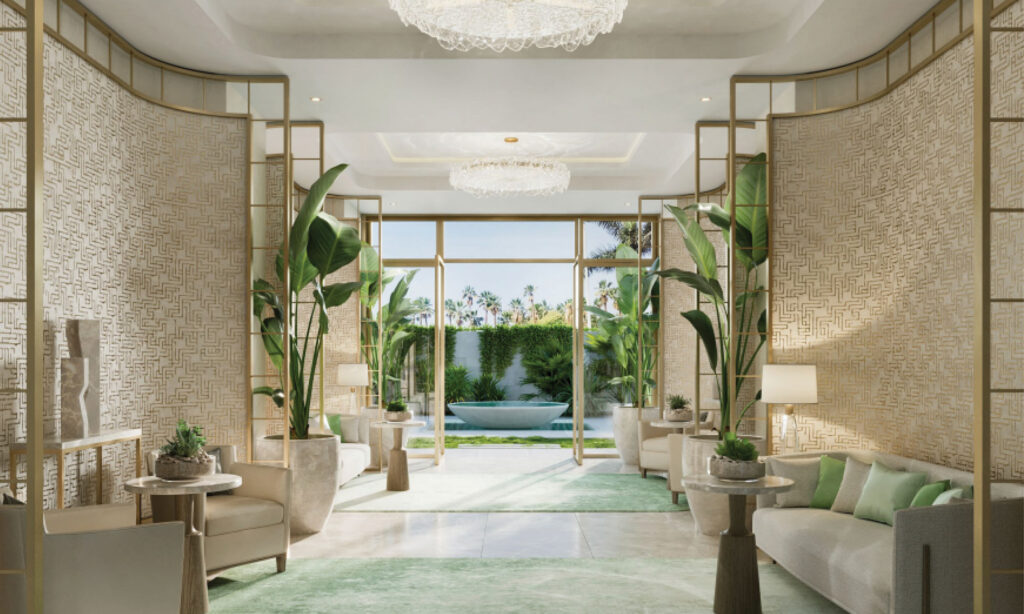
The application of wellness principles is transforming both residential and commercial spaces, creating environments that are truly optimized for human experience.
A. Wellness in Residential Design
Homes are becoming personal retreats, sanctuaries from the outside world.
A. The Biophilic Living Room: Features large windows for natural light, abundant indoor plants, furniture made from natural wood and linen, and soft, textured rugs to absorb sound.
B. Serene Bedrooms: Designed for optimal sleep with blackout blinds, circadian lighting, air purifiers, a comfortable mattress, and minimalist decor to reduce visual stimuli.
C. Spa-like Bathrooms: Incorporating natural stone, wood accents, soft lighting, aromatherapy diffusers, and perhaps a small indoor plant to create a calming, restorative bathing experience.
D. Healthy Kitchens: Utilizing non-toxic cabinetry and countertops, optimizing ventilation to remove cooking fumes, and designing layouts that promote efficient and joyful cooking.
E. Dedicated Wellness Nooks: Small, designated areas for meditation, yoga, reading, or quiet reflection, often near a window or a plant, providing a personal escape.
F. Outdoor Connections: Maximizing access to private balconies, patios, or small gardens, even in urban apartments, to provide fresh air and a sense of nature.
B. Wellness in Commercial Design
Workplaces are evolving from mere productivity hubs to environments that actively support employee health and engagement.
A. Natural Light Zones: Positioning workstations near windows, creating bright open common areas, and using light-colored finishes to maximize daylight penetration.
B. Living Walls and Indoor Gardens: Integrating large-scale plant installations in lobbies, communal areas, and even individual departments to improve air quality, reduce stress, and enhance aesthetics.
C. Acoustic Privacy Solutions: Implementing sound-absorbing ceiling panels, acoustic screens, quiet pods, and white noise systems to manage noise levels in open-plan offices and provide areas for focused work.
D. Ergonomic Workstations: Providing adjustable sit-stand desks, ergonomic chairs, and monitor arms for all employees, and offering training on proper ergonomic setup.
E. Dedicated Wellness Spaces: Including meditation rooms, quiet nap pods, fitness centers, lactation rooms, and outdoor green spaces for breaks and rejuvenation.
F. Healthy Cafeterias/Kitchens: Offering nutritious food options, filtered water stations, and creating inviting communal dining areas that encourage social interaction.
G. Air Quality Monitoring: Installing sensors to continuously monitor and manage indoor air pollutants, ensuring optimal air quality for employee health.
C. Wellness in Hospitality and Healthcare Design
These sectors have long recognized the importance of environment on well-being and are leading innovators.
A. Hotels: Designing guest rooms with circadian lighting, noise-reducing features, natural materials, and amenities that promote relaxation and sleep (e.g., essential oil diffusers, wellness menus).
B. Hospitals and Clinics: Integrating views to nature, natural light, calming color palettes, and biophilic elements to reduce patient stress, improve mood, and potentially accelerate healing. Designing comfortable, low-stress waiting areas.
C. Spas and Retreats: Emphasizing sensory experiences through natural light, soothing sounds, calming scents, natural textures, and a strong connection to outdoor elements to create immersive relaxation environments.
Benefits of Wellness-Centric Interiors
The advantages of prioritizing wellness in interior design are far-reaching, delivering significant value to individuals and organizations alike.
A. Profound Health and Well-being Outcomes
A. Reduced Stress and Anxiety: A calming environment lowers stress hormones (cortisol), heart rate, and blood pressure, promoting a deep sense of relaxation and mental peace.
B. Improved Mood and Emotional Regulation: Exposure to natural light and biophilic elements enhances positive emotions, reduces feelings of depression, and fosters overall emotional resilience.
C. Better Sleep Quality: Optimized lighting that supports circadian rhythms, combined with reduced noise and improved air quality, leads to more restorative and consistent sleep.
D. Enhanced Physical Comfort: Ergonomic design prevents musculoskeletal pain, while good air quality and thermal comfort reduce respiratory issues and general discomfort.
B. Enhanced Productivity and Cognitive Function
A. Improved Concentration and Focus: Less visual and auditory clutter, along with restorative natural elements, allows for sustained attention and deeper cognitive engagement.
B. Boosted Creativity and Innovation: Environments that foster well-being and reduce stress are linked to more divergent thinking, problem-solving, and novel ideas.
C. Reduced Mental Fatigue: Access to nature and varied sensory experiences helps restore directed attention and prevents cognitive exhaustion.
D. Faster Recovery from Tasks: Brief “micro-breaks” in biophilic zones or exposure to natural light can quickly refresh the mind, improving overall work efficiency.
C. Economic and Organizational Advantages
A. Increased Property Value: Homes and commercial properties designed with strong wellness features are highly sought after, commanding higher market value and faster sales/leases.
B. Reduced Absenteeism and Presenteeism (for Offices): Healthier employees take fewer sick days and are more engaged and productive when at work, leading to significant cost savings for businesses.
C. Higher Employee Retention and Attraction (for Offices): A visible commitment to employee well-being through design is a powerful recruitment tool, attracting and retaining top talent.
D. Lower Operational Costs: Maximizing natural light and implementing efficient HVAC systems can lead to reduced energy consumption and utility bills.
E. Positive Brand Reputation: Companies investing in wellness-centric designs build a strong brand image as progressive, responsible, and employee-centric organizations.
D. Environmental Stewardship
A. Sustainable Material Choices: Prioritizing non-toxic, natural, and sustainably sourced materials directly aligns with eco-friendly practices.
B. Energy Efficiency: Designs that maximize natural light and optimize ventilation reduce the reliance on fossil fuels for heating, cooling, and lighting.
C. Reduced Waste: Investing in durable, high-quality materials often leads to less frequent replacement and reduced landfill waste.
Challenges and Considerations in Adopting Wellness Design
While the benefits are clear, implementing truly wellness-centric interiors can present several challenges that require thoughtful planning and commitment.
A. Initial Investment Cost: High-quality non-toxic materials, advanced air filtration systems, circadian lighting, and extensive biophilic installations can have a higher upfront cost compared to conventional design. However, it’s crucial to emphasize the long-term ROI in health, productivity, and property value.
B. Maintenance and Upkeep: Living elements (plants, water features) and advanced filtration systems require ongoing maintenance, cleaning, and sometimes specialized care. This necessitates dedicated resources or professional services.
C. Space and Site Limitations: In existing buildings or compact urban dwellings, maximizing natural light or integrating large biophilic elements might be challenging due to architectural constraints or limited views. Creative solutions are required.
D. Complexity of Integration: Designing a holistic wellness environment requires careful integration of multiple systems (lighting, HVAC, smart controls, acoustics), demanding interdisciplinary collaboration among architects, interior designers, engineers, and wellness consultants.
E. Lack of Awareness and Education: Some clients or stakeholders may not fully understand the scientific basis or long-term benefits of wellness design, requiring comprehensive education and data-driven explanations.
Conclusion
The ascent of wellness-centric interiors signifies a powerful evolution in how we conceive of our built world. It’s a testament to the fact that design is not just about making things look good, but about profoundly impacting how we feel, perform, and live. By consciously infusing our spaces with elements that nurture our physical, mental, and emotional health, we are not just creating healthier homes and offices; we are shaping a future where environments are designed to actively support human flourishing, fostering a deeper connection to ourselves, each other, and the planet. This is the ultimate luxury, becoming an essential standard.

